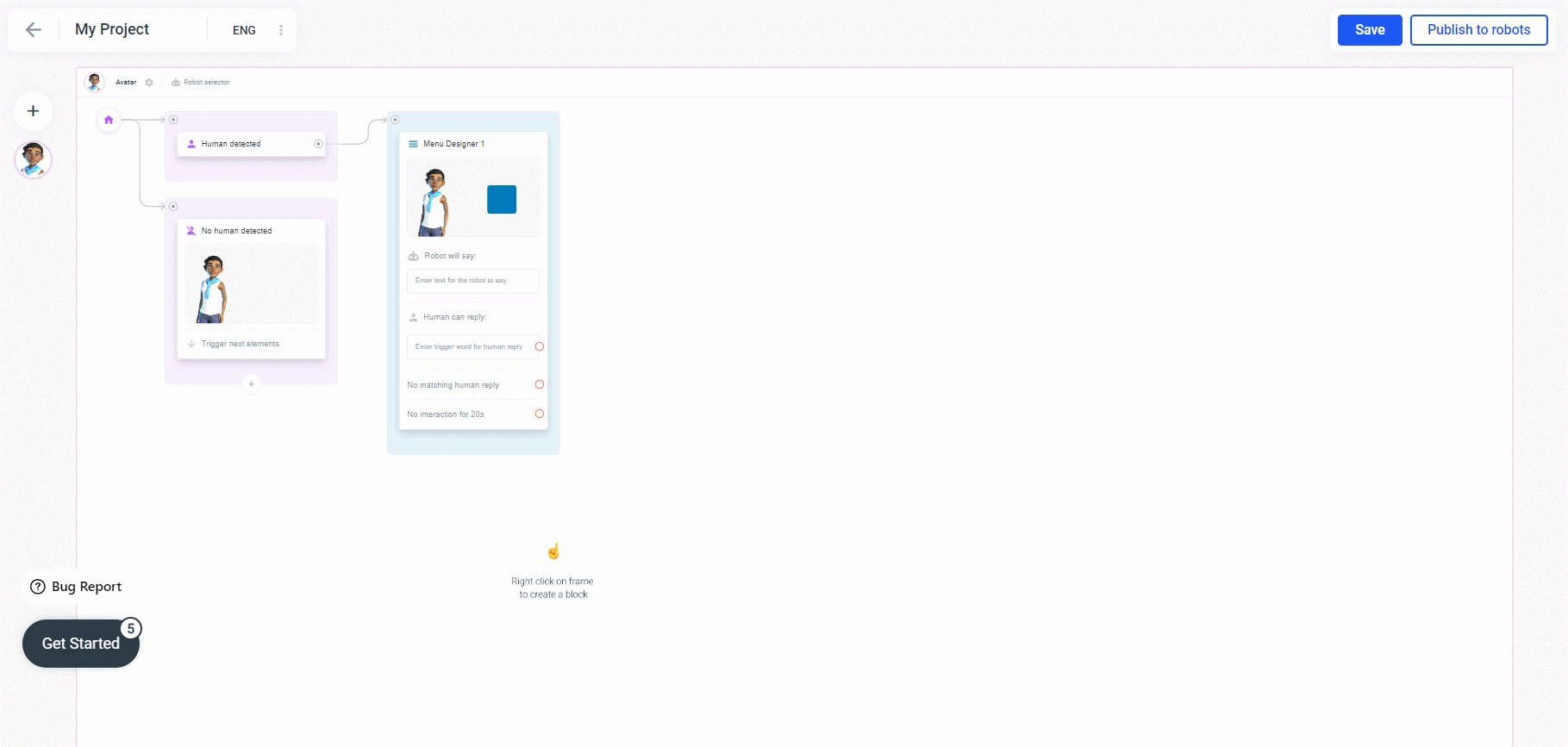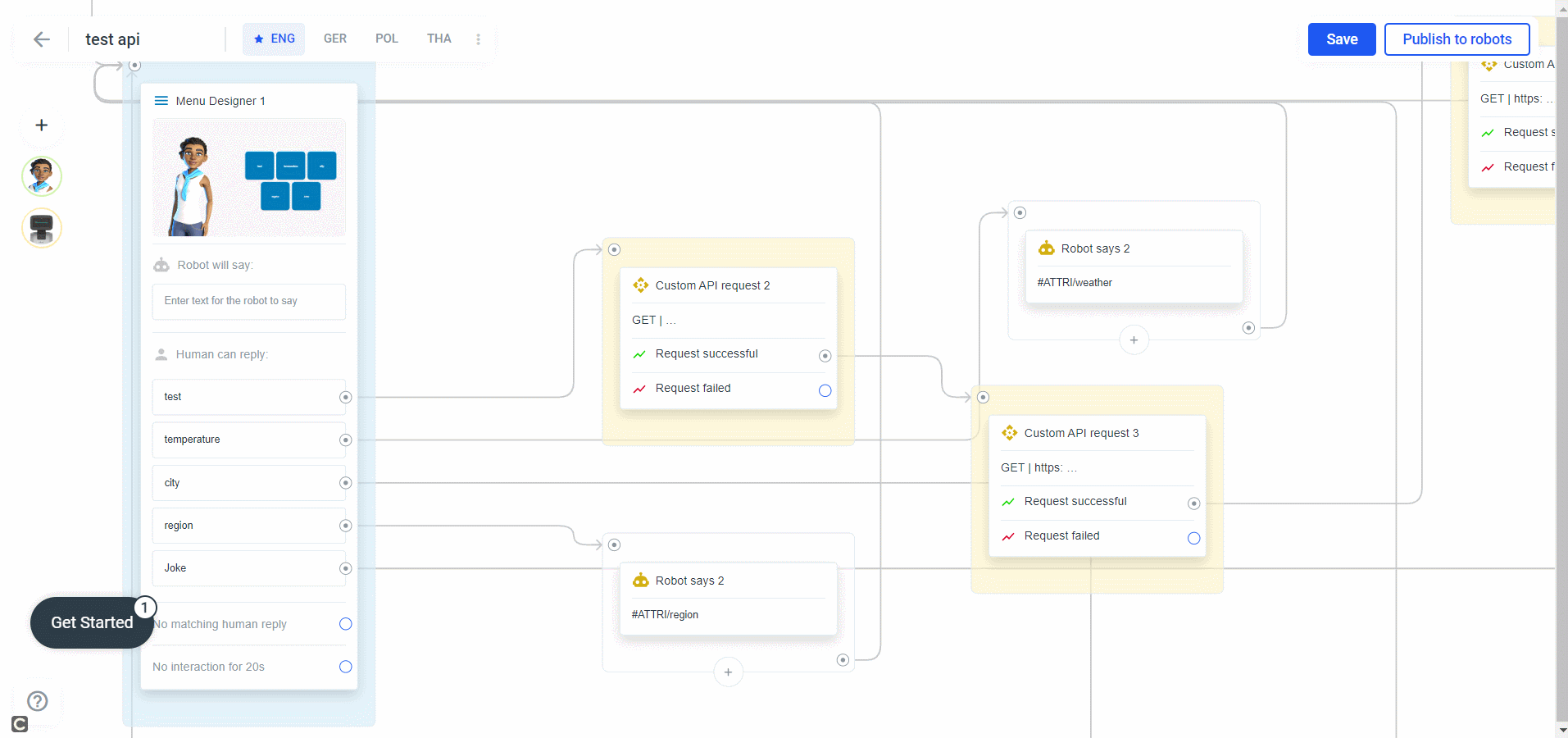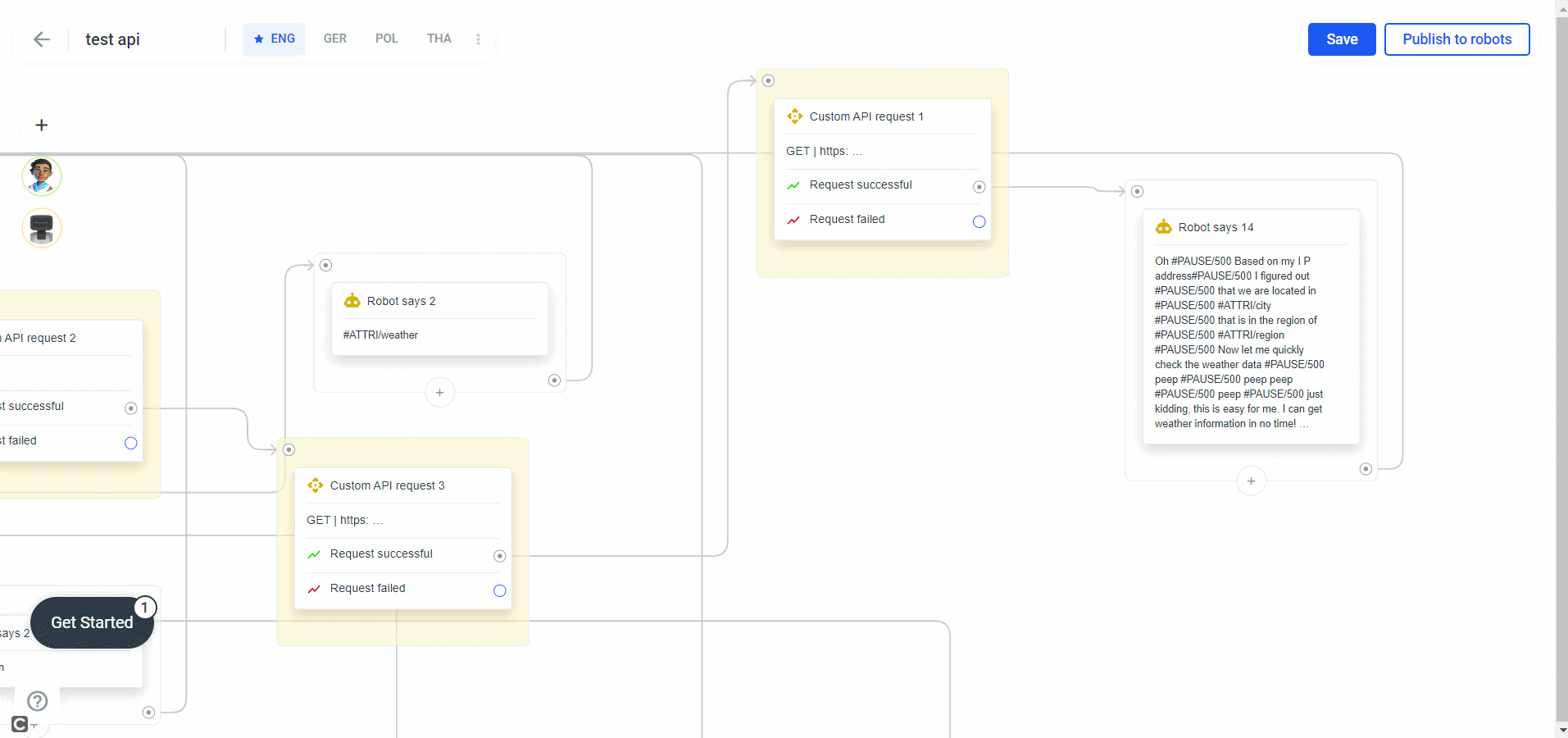Custom API request
API stands for application programming interface. The interface can be considered as a service contract between two applications. This contract specifies how the two communicate with each other using
To add a Custom API request element just right-click on a white space in your frame.
Click on the element to open the sidebar. In the sidebar you can enter the request URL, specify the content type and also add a transformation rule for your variables. You can also test the request with the button on the bottom of the side bar.

Change the request type:

Change the header if necessary:

Header types:
-
Authorization: Contains the authentication credentials for HTTP authentication.
-
WWW-Authenticate: The server may send this as an initial response if it needs some form of authentication before responding with the actual resource being requested. Often following this header is the response code 401, which means “unauthorized”.
-
Accept-Charset: This header is set with the request and tells the server which character sets (e.g., UTF-8, ISO-8859-1, Windows-1251, etc.) are acceptable by the client.
-
Content-Type: Tells the client what media type (e.g., application/json, application/javascript, etc.) a response is sent in. This is an important header field that helps the client know how to process the response body correctly.
-
Cache-Control: The cache policy defined by the server for this response, a cached response can be stored by the client and re-used till the time defined by the Cache-Control header.
Request types:
We support GET, POST, PUT, PATCH, DELETE

Body types:
POST, PUT, PATCH Body types are:
-
Raw: JSON, Text, HTML
-
Form data
-
URL Encoded


Save the information from your API into a variable:

$ |
Das Stammobjekt oder Array.
|
.property |
Wählt die angegebene Eigenschaft in einem übergeordneten Objekt aus.
|
Information stored in variables can be used in other API calls and can be spoken by the robot:

Use #ATTRI/name_of_the_variable
where ever you need insert the value of the variable. (For example to let the robot say out loud, what is stored in the variable, or as information for another API call.)
If a API does not support cors ("cross origin") requests, change the parameter to "text/plain" instead off "application/json"!API requests need to be HTTPS. HTTP is not supported.
Requirements profile or specification for API interfaces
-
Request Format
-
Our API supports communication using POST, PUT, and PATCH methods. Clients should select the appropriate method based on the nature of their request. The POST method is typically used for creating new data, PUT for updating existing data, and PATCH for making partial updates.
-
-
Body Types
-
For the body of API requests, our interface accepts the following types:
-
Raw: This includes formats such as JSON, Text, and HTML. Raw format is suited for sending unstructured data or complex nested JSON objects.
-
Form Data: This type is ideal for sending structured data consisting of key-value pairs.
-
URL Encoded: Use this format for simple textual data that is encoded as part of the URL, often used in query parameters.
-
-
Handling CORS
-
If your application does not support CORS (Cross-Origin Resource Sharing), we recommend changing the content-type parameter in your requests from "application/json" to "text/plain". This alteration can help bypass cross-origin restrictions while ensuring the functionality of API requests.
-
-
HTTPS Requirement
-
To ensure the highest level of security and data integrity, our API strictly supports requests made over HTTPS. We do not accept HTTP requests. This enforcement helps protect your data and our services from potential security threats.
-
-
Authentication
-
We support API key and token or bearer authentication methods for securing API requests. Please note that OAuth and SSL certificate authentication are not supported in our system. Clients should include their API key or bearer token in the request header for authentication.
-
